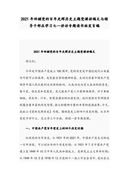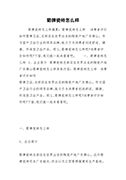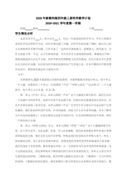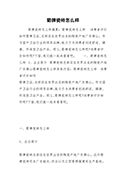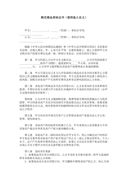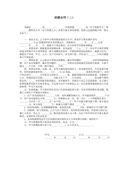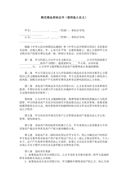九年级英语Learning about China教案(精选2篇)九年级英语教案
九年级英语Learning about China教案(精选2篇)
九年级英语Learning about China教案 篇1
unit 5 learning about china.
一. 教学内容:
topic 1 could you tell me something about the places that you visited?
section c and d
二. 重点、难点:
(一)单词:
oriental 东方的,亚洲的 pearl 珍珠 oriental pearl 东方之珠
peak 山巅,顶峰 victoria peak 太平山顶
gambling 赌博 gambling house 赌场
ruin (复)废墟,遗迹 毁坏,毁灭 ruins of st. paul 大三巴牌坊
island 岛屿
various 各种各样的
latest 最近的,最新的,最晚的
bar 酒吧,(卖东西的)柜台
pc=personal computer 个人计算机
license 执照,许可证
giraffe 长颈鹿neck 脖子,颈项rather 相当,颇,宁可
below 在……下面
freeze 结冰
thick 厚的,浓的
mild 温暖的,暖和的(天气,尤指冬天),性情温和的
sunshine 阳光
flour 面粉,粉
plain 平原
词组: be known as 作为……而著称 think of 想起,考虑,认为
break down 损坏,分解,抛锚 take away 拿走
(二)句子:
1. if you have a chance to go there, you should visit disneyland, ocean park and victoria peak.
2. when you hear the name macao, you may think of its gambling houses.
(三)语法知识:
定语从句:
关系副词引导的定语从句
关系副词可代替的先行词是时间、地点或理由的名词,在从句中作状语。
(1)when, where, why
关系副词when, where, why的含义相当于“介词+which”结构,因此常常和“介词+ which”结构交替使用,例如:there are occasions when(on which)one must yield(屈服,投降,弯下去). 任何人都有不得不屈服的时候。
beijing is the place where(in which)i was born. 北京是我的出生地。
is this the reason why(for which)he refused our offer? 这就是他拒绝我们帮助他的理由吗?
(2)that代替关系副词
that可以用于表示时间、地点、方式、理由的名词后取代when, where, why和“介词+ which”引导的定语从句,在口语中that常被省略,例如:
his father died the year(that / when / in which)he was born. 他父亲在他出生那年逝世了。
he is unlikely to find the place(that / where / in which)he lived forty years ago. 他不大可能找到他四十年前居住过的地方。
判断关系代词与关系副词
方法一:用关系代词还是关系副词完全取决于从句中的谓语动词。及物动词后面无宾语,就必须要求用关系代词;而不及物动词则要求用关系副词。例如:
this is the mountain village where i stayed last year.
i’ll never forget the days when i worked together with you.
判断改错
(错)this is the mountain village where i visited last year.
(错)i will never forget the days when i spent in the countryside.
(对)this is the mountain village(which)i visited last year.
(对)i’ll never forget the days(which)i spent in the countryside.
习惯上总把表地点或时间的名词与关系副词 where, when联系在一起。此两题错在关系词的误用上。
方法二:准确判断先行词在定语从句中的成分(主、谓、宾、定、状),也能正确选择出关系代词/关系副词。
例1. is this museum ___ you visited a few days ago?
a. where b. that c. on which d. the one
例2. is this the museum ____ the exhibition was held.
a. where b. that c. on which d. the one
答案:例1 d, 在句1中,所缺部分为宾语,而where, that, on which都不能起到宾语的作用,只有the one既作了主句的表语,又可作从句的宾语,可以省略关系代词,所以应选d。变为肯定句:this museum is the one you visited a few days ago.
例2 a 而句2中, 主、谓、宾俱全,从句部分为句子的状语表地点,既可用副词where,又因 in the museum 词组,可用介词in + which 引导地点状语。而此题中,介词on 用得不对,所以选a。变为肯定句:this is the museum where the exhibition was held.
关系词的选择依据在从句中所做的成分,先行词在从句中做主、定、宾语时,选择关系代词(who, whom, that, which, whose);先行词在从句中做状语时,应选择关系副词( where 地点状语,when 时间状语,why 原因状语)。
限制性和非限制性定语从句
(1)定语从句有限制性和非限制性两种。限制性定语从句是先行词不可缺少的部分,去掉它主句意思往往不明确;非限制性定语从句是先行词的附加说明,去掉了也不会影响主句的意思,它与主句之间通常用逗号分开,例如:
this is the house which we bought last month. 这是我们上个月买的那幢房子。(限制性)
the house, which we bought last month, is very nice. 这幢房子很漂亮,是我们上个月买的。(非限制性)
(2)当先行词是专有名词或物主代词和指示代词所修饰时,其后的定语从句通常是非限制性的,例如:
charles smith, who was my former(以前的,从前的)teacher, retired last year. 查理•史密斯去年退休了,他曾经是我的老师。
my house, which i bought last year, has got a lovely garden. 我去年买的那幢房子带着个漂亮的花园。
this novel, which i have read three times, is very touching. 这本小说很动人,我已经读了三遍。
(3)非限制性定语从句还能将整个主句作为先行词, 对其进行修饰, 这时从句谓语动词要用第三人称单数,例如:he seems not to have grasped what i meant, which greatly upsets me. 他似乎没抓住我的意思,这使我心烦。
liquid water changes to vapor, which is called evaporation. 液态水变为蒸汽,这就叫做蒸发。
说明:关系代词that和关系副词why不能引导非限制性定语从句。
介词+关系词
(1)介词后面的关系词不能省略。
(2)that前不能有介词。
(3)某些在从句中充当时间,地点或原因状语的“介词+关系词”结构可以同关系副词when 和where 互换。this is the house in which i lived two years ago. =this is the house where i lived two years ago.
do you remember the day on which you joined our club?=do you remember the day when you joined our club?
【典型例题】
例1. – barbara, where do you work?- i work for a company _____ sells cars.
a. who b. what c. which d. where
例2. i keep an english diary ____ it helps me improve my writing skill.
a. how b. when c. because d. if
keys: 1. c 2. c
九年级英语Learning about China教案 篇2
unit 5 learning about china
一. 教学内容:
unit 5: learning about china. review
二. 重点、难点:
定语从句及单项选择训练
三. 具体内容:
定语从句专讲专练
概念:在含有主句和从句的复合句中,修饰主句中的某一名词或代词的从句叫做定语从句。它所修饰的词叫先行词。定语从句就跟在先行词的后面。用来引导定语从句的词叫关系词,分为关系代词(who, whom, that, which, whose)和关系副词(where, when, why)。
e.g. did you see the person who/that stole it?
this is the pen which/that he is looking for.
上面两例中的先行词分别是the person与the pen,后面是由关系代词who/that; which/that引导的定语从句。
2. 关系代词的选择及功能。
引导定语从句的词有关系代词who, that, which, whom, whose和关系副词where, when, why。它们放在先行词和定语从句之间起联系作用,同时又充当定语从句中的一个成分(如主语或宾语)。有关先行词的选择取决于两点:先行词是人还是物;关系代词在从句中做主语还是宾语。具体用法如下:
1)当先行词是人时,关系代词可以用who或that;当先行词是物时,关系代词可用which或that。
e.g. the film which/that they saw was very interesting.
the boy who/that is sitting in the sun is my brother.
2)当关系代词在句中做宾语时,关系代词可以省略。
e.g. the man (who, whom, that)they are waiting for comes from japan.
3)whose 指人或物的所有格。
e.g. do you know the boy whose hair is yellow?
the classroom whose windows are closed is ours.
4) 关系副词when, where, why = 介词+ which
when 表时间,跟在hour, moment, day, month, year, season, time等之后。
e.g. can you tell me the date when/on which you were born?
where 表地点,跟在place, village ,town, city, home等之后。
e.g. this is the place where/in which i grew up.
why表原因, 在 reason(原因)之后。
that’s the reason why she didn’t come to work.
3. 特殊情况
1)当先行词被形容词的最高级或序数词修饰时,关系代词必须用that。
e.g. this is the best novel (that ) i have ever read.
2)如果指物的先行词是不定代词或被不定代词修饰时,必须用that,不能用which。
不定代词有all, something, everything, anything, nothing, none, the one, much, little, every, any, some等。
e.g. i mean the one (that)you talked about just now.
3)当先行词有the only, the very, the last, the same, the first等词修饰时,关系代词必须用that。
e.g. he is the only person( that )i saw there.
4)关系代词在定语从句中作介词的宾语时,如果介词放在它的前面,只能用which或whom。
e.g. this is the room that/which he lived in two years ago.
=this is the room in which he lived two years ago.
the girl who/whom/that he is talking to is my sister.
=the girl to whom he is talking is my sister.
但有些介词短语的固定词组不能拆开
e.g. the babies who /that the nurse are looking after are healthy.
5) 当关系代词在定语从句中充当主语时,定语从句的谓语动词取决于先行词而不是关系代词。
e.g. the girl who has long hair is my daughter.
the trees that were planted by us last year have grown well.
6)当引导定语从句的关系代词在从句中作表语时用that。
e.g. she is no longer the girl that she wanted to be.
7)当有两个或两个以上分别表人和物的先行词时只能用that
e.g. he talked about the teachers and schools that he had visited.
8)以who ,which 开头的疑问句为避免重复,用that
e.g. who is the girl that is standing at the door.
9)主句是there be 结构,定语从句用that 作关系代词
e.g.there is a seat in the corner that is still free.
10) 关系词只能用which,而不用that 的情况:
a.先行词为that, those时,用which, 而不用that.例如:
what’s that which is under the desk? 在桌子底下的那些东西是什么?
b.关系代词前有介词时,一般用which,而不用that.例如:
this is the room in which he lives. 这是他居住的房间。
c.引导非限制性定语从句,用which, 而不用that.例如:
tom came back, which made us happy. 汤姆回来了,这使我们很高兴。
11)当先行词为anyone, everyone, those ,he , she , all, any时,用 who
e.g.: i will shoot anyone who moves . it is he who saved me.
【典型例题】
单项选择题一向是各省市中考的必考题型。它的特点是考点多,覆盖面广,题量大,潜隐性强。在考查纯语法、词汇的基础上,更增加了在特定的语境中运用词法、句法、惯用法的考查,突出了对同学们综合运用英语语言能力的考查和日常交际用语的考查,即词法、句法、惯用法、语境四大考点。该题型的考点主要分布在:名词、动词、形容词、副词、代词、冠词、连词、介词、情态动词;时态、语态;词义辨析、语序、各种不同的从句及交际用语上。其主要命题特点有以下几种。
1. 考查学生在特定的语言环境中运用语法的能力。从近几年各省市考题看,几乎所有的考题都提供了一个微型语境,让同学们根据讲话人所处的语言环境来选择答案。此类考题,所提供的四个备选答案,不看特定的语境,四个选项往往都可成立,因而有较强的干扰性和迷惑性。
2. 考查同学们掌握和运用日常交际用语的能力。《英语教学大纲》列出了日常交际用语简表,共有30类。这30类交际功能是我们初中所学内容的总结。“大纲”明确提出:要使学生获得“为交际初步运用英语的能力”。此类考题就是针对这项教育任务而出的,主要考查同学们的日常交际能力及对中西方文化差异的了解。
3. 考查同学们的应试能力。近年的单项选择题出现题干增长的情况,试题常在主要成分中插入一些次要的信息。这些次要的信息常常干扰同学们的思维,分散同学们的注意力。同学们如何撇开多余的信息,抓住题干中的个别关键词,成为解题的关键。有些考题在题干空格后还附有一些信息,这些信息有的对解题起决定性作用。答题时一定要瞻前顾后,通盘考虑。如果同学们平时只是不作任何理解地死记硬背,要想在单项选择中获取高分,那是很困难的。
由于单项选择题所考查的范围较广,所以要想做好此类题一要具备扎实的英语基础知识,二要紧扣语境,抓住关键词。具体应注意以下几点:
(1)复习时要弄清初中阶段所出现的几种主要时态和语态的用法、结构、与之连用的状语及各自的特殊用法。重点要分清现在完成时、一般过去时的用法。对宾语从句、状语从句、动词不定式、比较等级以及它们的用法规则都要一一弄清楚。还要注意固定搭配、习惯用语、动词的时态和语态、动词辨析以及不同词性的词的用法。
(2)在解题方面要突出语境,在语境中选语句和词汇,防止汉语思维的干扰。英语中一些关键词的含义往往是由它所处的语义环境(即上下文)决定的,答题时如忽视了语境,就很容易答错题。
(3)在解题时要注意句型结构和语序。要掌握初中阶段所出现的句型结构,注意宾语从句、感叹句的语序。
(4)掌握习语和日常交际用语。应掌握大纲词汇、习惯用语。由于文化背景和风俗习惯的不同,对于一些日常交际用语应记牢。
除此之外,考生在做单项选择题时,还应掌握一些解题方法。
1. 直接法——直接利用相关语法知识,通过题干中的已供信息,捕捉到解题线索,从而得出正确答案的解题方法,例:
--will you come to the net bars(网吧)with me?
--sorry. my mother always tells me there.
a. not go b. go c. not to go d. to go
根据句意可知此题考查动词不定式的否定形式,即tell sb. not to do sth. ,故此题应选c。
2. 关键词法——许多题目中都有这样一些词,它们对于快速而准确地判定答案起着至关重要的作用。我们称这些词为关键词(key words)。找到句中的关键词,也就找到了解题的突破口,例:
——he hardly hurt himself in the accident, ___?
a. doesn’t he b. didn’t he c. did he d. does he
该题中hardly与hurt是起关键词作用的。凡陈述部分含有hardly, never, little, few等否定意义的词时,反意疑问句用肯定形式;而hurt一词的过去式与原形相同,此处hurt未加s,应为过去式。因此本题答案c是正确的。
3. 类推法——如果对题目的备选答案没有十分把握或把握很小,不妨利用“如果a对,那么b也对”的类推法,从而可将a、b予以否定,例:
who’s the man at the door? ___
a. he is a doctor b. he is a friend of mine
c. he is a famous singer d. he is twenty
仔细分析备选答案就可发现:a、c选项针对的是“职业”。若a是对的,那么c也会是对的。d回答的是年龄。故惟有b才是正确的。
4. 前后照应法——此方法多用于两个以上句子或对话形式命题的题目。解题前透彻理解,然后联系上下文,捕捉隐含信息,方能准确找出答案,例:
— he isn’t a teacher, is he? — ____. he works in a hospital.
a. yes, he is b. no, he isn’t c. yes, he isn’t d. no, he is
本题考查否定的反意疑问句的回答。由后半句的回答,我们知道“他”的身份不是教师;否定反意疑问句回答中的yes其实际含义为“不”,no的实际含义为“是”。因此应选择的是b。
5. 排除法——根据题干提供的信息,先把一眼就看出的干扰项排除,缩小选择范围,然后将剩余的选项填入空白处进行检验,辨别真伪,例:
the girl asked the teacher ____.
a. what does the museum looks like b. what did the museum look like
c. what the museum looks like d. what the museum looked like
本题主要考查宾语从句中的语序及时态的对应关系。主句动词是过去时,从句的谓语动词也应是过去时的某种时态,故a、c被排除。而b中有词序错误,所以d为正确答案。
6. 交际法——此方法可用30个交际用语,联系上下文直接解题,例:
would you like to have another cup of tea? ____.
a. yes, i do b. not at all c. no, thanks d. help yourself
本题主要考查简单交际用语的应答。对别人的邀请,如果表示不接受时,应委婉说出,不能断然拒绝。因此,选c是最佳答案。

